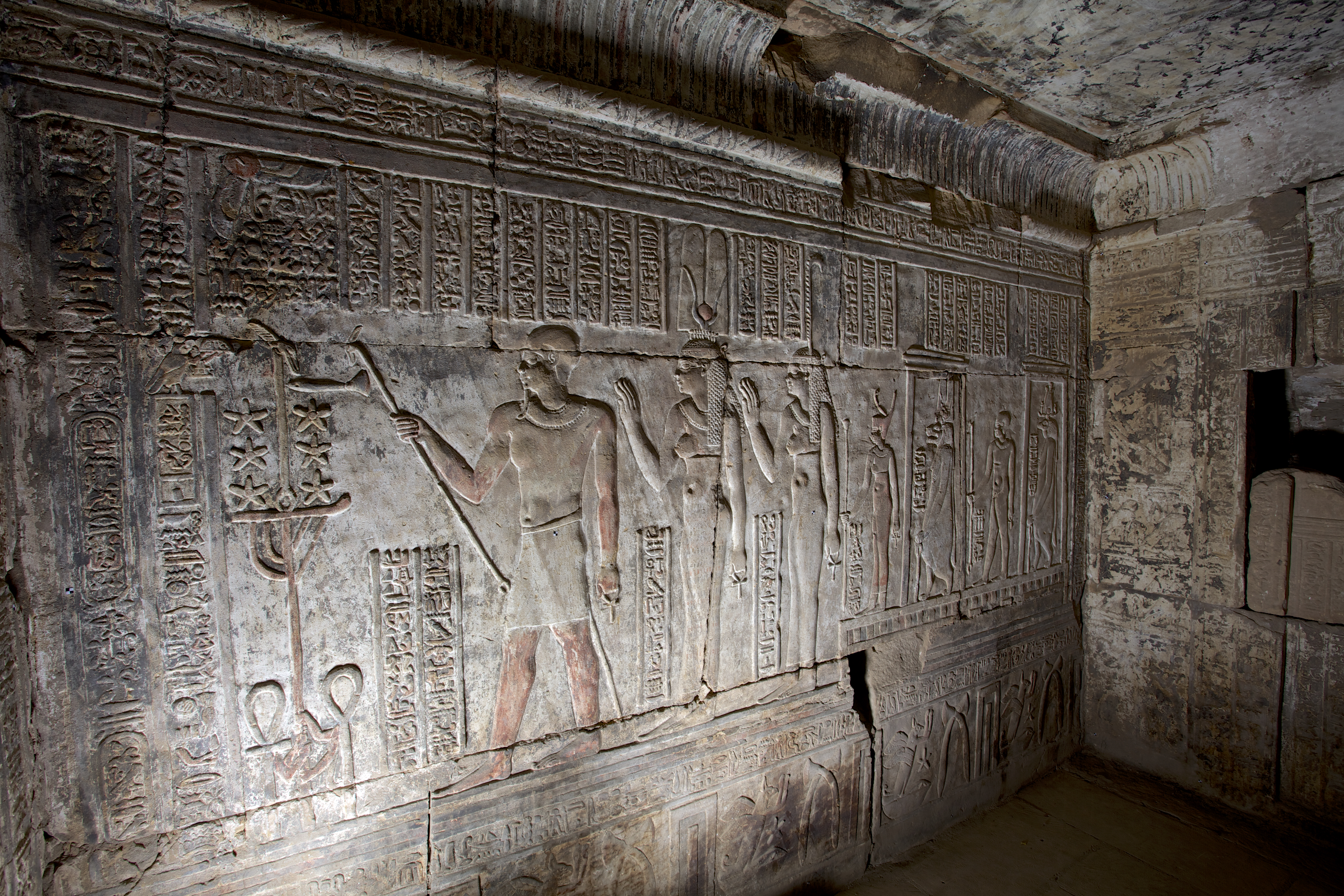Od Memfis do Teb

Dekoracja sanktuarium ptolemejskiego w świątyni Hatszepsut
W architekturze i na ścianach świątyni Hatszepsut zaobserwować można długą historię skuć, przekuć, zniszczeń, renowacji i uzurpacji, które przejawiają się w przerabianiu oryginalnych scen, ich niszczeniu lub dodawaniu nowych pomieszczeń. Jedną z takich części świątyni jest pomieszczenie wykute za salą posągu w Głównym Sanktuarium Amona-Ra, które powstało w czasach panowania Ptolemeusza VIII. Zgodnie ze scenami ukazanymi na jego ścianach wskazuje, że było to miejsce kultu Amenhotepa syna Hapu i Imhotepa.
Decoration of the Ptolemaic Sanctuary in the Temple of Hatshepsut
In the architecture and on the walls of the Hatshepsut temple, a long history of chaffing, forging, destruction, renovation and usurpation can be observed. The above is manifested in the modification of original scenes, their destruction or adding new rooms. One such part of the temple is the room carved behind the statue hall in the Main Sanctuary of Amun-Ra, which was built during the reign of Ptolemy VIII. According to the scenes depicted on its walls, it indicates that it was a place of worship of Amenhotep, son of Hapu and Imhotep.